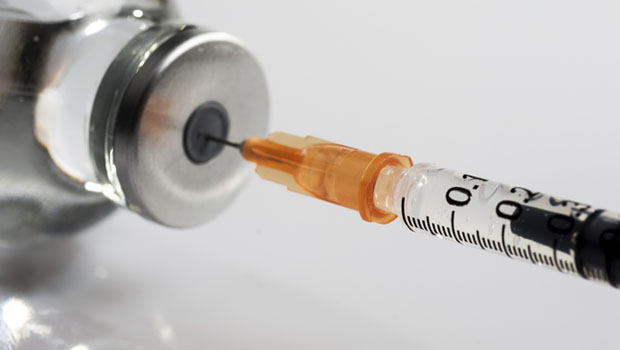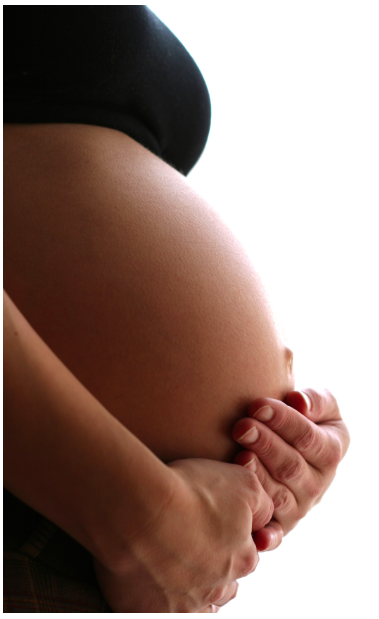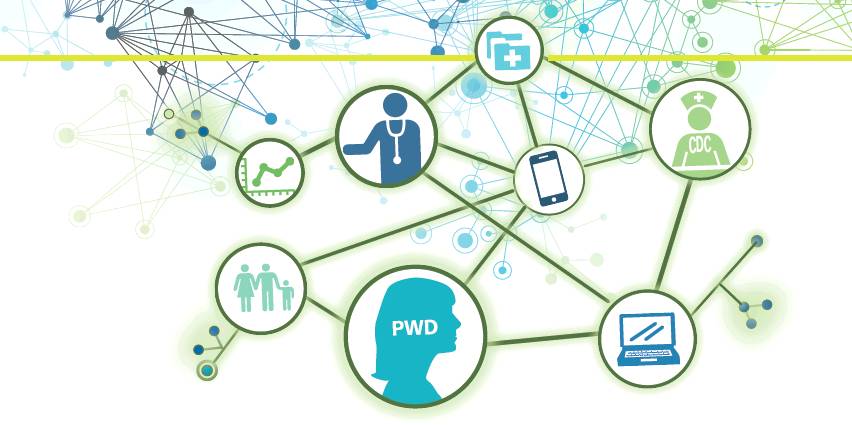Unlocking the Basal Mystery

Any person with diabetes on insulin therapy knows that you need insulin when you eat a meal. Using a see-saw as an analogy, food and insulin balance each other out. Too much food and not enough insulin, you have hyperglycemia. Too much insulin and not enough food, and you have hypoglycemia.
But most people who use insulin also realize that it’s not just for when you eat. Folks with a pump use insulin nearly 24 hours a day, taking only short breaks for showering, swimming, or sex. Also, people who manage with multiple daily injections (MDIs) have to take two types of insulin, a short-acting bolus insulin (Humalog, Novolog or Apidra) for their meals as well as a long-acting basal insulin (Levemir or Lantus).
There’s a big difference between the two, but many people with diabetes don’t understand what basal insulin is and what it means to them. They either follow doctor’s orders and take long-acting insulin without understanding exactly what’s going on in their bodies or, worse, they don’t follow doctor’s orders.
Let’s look at basal insulin, what it does, and how to test your basal rate, since a little knowledge can bring an outsized peace of mind:
Managing Spontaneous Sugar
Basal literally means “background”, and basal insulin is the background insulin that has to be constantly infused or active in our bodies or our blood sugar spikes. Unlike previous long-acting insulins that would peak, basal insulin is programmed to keep our blood sugars stable in the absence of food.
But how many of us actually understand the biology behind the basal? I’ve had Type 1 diabetes for almost 20 years, but it wasn’t until I took an Anatomy & Physiology class and spoke with several certified diabetes educators that I understood why my blood sugar spiked without my insulin pump, even if I hadn’t eaten anything. The short answer behind that mysterious spike is that the body doesn’t just get glucose from food. It also can generate glucose from non-carbohydrate sources or from glycogen in a variety of ways.
The first process that causes spontaneous sugar is called gluconeogenesis, a word which literally means “creating new glucose”. Gluconeogenesis occurs in our livers, and it happens either when there is a lack of carbohydrate sources for energy or if the body needs more energy than is provided by food. The process uses amino acids from proteins, lactic acid, and fatty acids to make glucose.
Where does that amino acid come from? It’s been saved by the body as a sort of rainy day fund. Carbohydrates only last a few hours in the body before they have been fully digested and brought to the cells or stored as fat. Once that process is over, the body still needs glucose to continue functioning. While you’re sleeping and not eating, your body still needs glucose, so it uses fat and protein to generate it.
That glucose, in turn, still needs insulin for transportation into the cells, just like the glucose made when you eat. So if you are generating your own glucose but not your own insulin, you’ll wind up with a very high blood sugar when you wake up.
Another reason for spontaneous sugar is the fight-or-flight response, where the body requires a sudden surge of energy and the adrenal glands release the hormone epinephrine. Epinephrine stimulates the production of glucagon, which then stimulates the liver to create glucose. This is similar to what happens when someone takes an injection of glucagon during a seizure or severe hypoglycemic reaction. In that event, glucagon acts on the liver to stimulate the production of glucose without requiring eating.
Glycogen is often called upon during intense exercise because the athlete is using far more glucose than he or she is consuming. As an endurance athlete exercises, glycogen gets used up, which is why it’s important to increase carbohydrate intake before, during, and after an athletic event so that the body can create and store glycogen in the liver, as well as have available glucose during the event.
The end result of all these processes is glucose in the bloodstream just waiting to be used by the body’s cells. But those of us who use insulin know that it’s impossible for the cells to use the glucose that has been produced because we don’t make any, or much, insulin. Hence the continuous need for insulin.
 Measuring Basal
Measuring Basal
People with diabetes have to balance their food and insulin to prevent high and low blood sugars, and they also have to balance their body’s production of glucose with insulin, as well. Endocrinologists and diabetes educators will often use a formula using height and weight to approximate how much insulin you will likely need if you are a newly diagnosed PWD. But insulin needs often change without warning, and it’s important to stay on top of those changes to manage diabetes.
While it’s important to contact your healthcare provider before making any changes to your insulin, it’s also important to manage your diabetes as independently as is safely possible, especially if you are dealing with dangerous high and low blood sugars.
Yet with two overlapping insulins, it can be tricky to know whether you need to change your bolus ratio (the insulin you take for a meal) or your basal rate if you’re having a problem staying in a good BG range. As with anything with diabetes, it might take some math and some monitoring to figure out the answer.
If your pre-meal blood sugar starts within “goal range” (70-130 mg/dL) and your 2-hour post-meal blood sugar is greater than 180 mg/dL, then your bolus ratio is the likely culprit, says Courtney Slater, a certified diabetes educator at the Springfield Diabetes and Endocrine Center in Illinois. If your blood sugar is spiking more than 2 hours after a meal or climbs back up by the next meal, then your basal rate is your target.
“It takes at least 3 blood sugar readings for 3 consecutive days to determine a pattern,” Slater explains.
That means for 3 days you should test pre-meal, 2 hours after the meal, and then the next pre-meal reading. High at 2 hours post-meal? It’s a bolus issue. Within range after 2 hours, but high again at the next meal? It’s your basal. But all of this has to happen 3 days in a row.
Why 3 days? Because diabetes management isn’t always an exact science, and a high carb/high fat meal or an unexpected activity can cause blood sugar excursions. A 3-day period will determine whether the issue is consistent.
Don’t panic if this sounds complicated, as not everyone has to go through this process regularly. Basal rate testing is not something that needs to be done unless a problem is suspected or there’s been a shift in your routine, says Slater.
“If your schedule, activity, or eating habits change, then a basal test may need to be done so you can shift your insulin to match your new needs,” she says. “If it’s not broke, don’t fix it.”
If a problem is identified and a basal rate test is required, the actual process is fairly straightforward, although it can be onerous. A basal test requires refraining from consuming any carbohydrates during the entire testing period, which often means skipping a meal.
Overnight basal testing is often the first area that endocrinologists and certified diabetes educators will examine, because how you start the day often predicts how the entire day will go. The night before the testing starts you will want to eat a fairly low-carb meal for dinner, so that both the carbohydrates and your insulin have finished working by the time you go to sleep. Four hours after your last bolus, you can start the test.
“That 4-hour window allows the carbohydrates to be digested and out of the bloodstream, for the most part, and the fast-acting insulin used to cover the food to also be out of the system,” explains Slater. “If a basal test is started before this 4-hour window has lapsed, the person may notice blood sugar fluctuations not related to basal insulin.”
If the initial reading is within a decent range, you can continue checking every 2 to 3 hours until breakfast. A good suggested range is between between 70 and 250 mg/d, advises Gary Scheiner, a certified diabetes educator and founder of Integrated Diabetes Services. If you stay within 30 mg/dl of your initial reading, your basal rate is likely fine. But if your reading drops or rises more than that, follow your healthcare professional’s instructions on how to adjust your insulin.
Typically the basal rate on an insulin pump will need to be raised or lowered approximately 2 hours prior to when the out-of-range blood sugar occurs. This is because basal insulin is not instantaneous, so you have to work backwards to fix the problem.
For a daytime basal rate test, follow a similar procedure, only this time, you’ll have to skip a meal. For example, a midday basal rate test will require you to eat, wait 4 hours, and then skip lunch as you test during the afternoon. During the day, you can test more often than overnight, since you won’t be waking yourself up and losing sleep.
 Besides refraining from eating, another key to a successful basal test is to keep your activity level low-key while still adhering as close as possible to your daily routine. You want to find out what your body does normally, not what it does during a test.
Besides refraining from eating, another key to a successful basal test is to keep your activity level low-key while still adhering as close as possible to your daily routine. You want to find out what your body does normally, not what it does during a test.
Also, remember to play it safe. If your blood sugar rises significantly or if you have a low blood sugar, stop your test and treat! Make a note of the result and use that in your trends, but don’t keep up with the basal test at the expense of your health.
Not One Size Fits All
Many people with diabetes wonder what’s a good ratio between basal and bolus insulin intake. While the “status quo” is to take 50% basal and 50% bolus, that’s not always the case, says Slater.
“If you eat a higher carbohydrate diet or still produce some of your own insulin, the ratio may be skewed in one direction or another,” Slater explains. “However, in general, our own pancreas releases insulin in a manner similar to this [ratio]. It’s important to try to work out proper insulin doses so you aren’t attempting to cover your food with basal insulin and vice versa.”
Basal insulin can seem complicated, but it’s worth the effort to try and become familiar with how it works with your body. It may involve some trial and error, but understanding it makes living with a pump much easier and frees up your dietary choices.
Thanks for reading this Insulin Nation article. Want more Type 1 news? Subscribe here.
Have Type 2 diabetes or know someone who does? Try Type 2 Nation, our sister publication.







